Another year’s gone by, and it’s time to check in on the latest SEO tips and tricks.
The reason we write this guide every year may not be obvious to the average business owner. If you’re just getting started with SEO, it’s worth noting that due to Google’s consistent algorithm changes, strategies, tips, and tricks all need to evolve over time.
In fact, the majority of what worked just 5-6 years ago isn’t at all viable in 2019.
Believe it or not, keyword stuffing was indeed a real thing. Then there was the private blog network craze. And let’s not forget exact-match domains.
While last year was indeed an eventful year for the search engine optimization industry, the majority of SEO tactics that worked well (fortunately) continue to be effective in 2019.
With thousands of clients subscribed to our services, we get to see a lot of interesting search engine data. That means a bird’s-eye view on what works to earn higher rankings, and what doesn’t.
So let’s get down to brass tacks. Here’s our list of the five most important SEO tips and tricks to consider in 2019.
1. Target Smart Keywords
Keyword research is an SEO tactic that (fortunately) hasn’t changed much over the years, and will likely continue to be one of the most important to get right.
It’s a necessary prerequisite for success in link building, on-page SEO, and content marketing. Honestly, if you’re going to be doing any business online, you’ll need to include keyword research in some capacity.
To put it simply, effective keyword targeting underlies almost every successful SEO campaign. Share on XRemember, keywords determine the niche relevance and visibility of your site for specific search terms.
Knowing how to pick the best keywords does take a bit of effort and practice. But don’t worry, it’s not rocket science.
We’ll cover the basics below. If you want a complete guide, we’ve crafted one for you here.
Keyword Research Basics
Start by creating a shortlist of topics, products, or services related to your business. Write them all down in a spreadsheet.
Next, we recommend using the free keyword research tool UberSuggest. This will give you a bunch of useful data and alternative keyword variants to consider as well.
So start by entering a keyword into the tool.
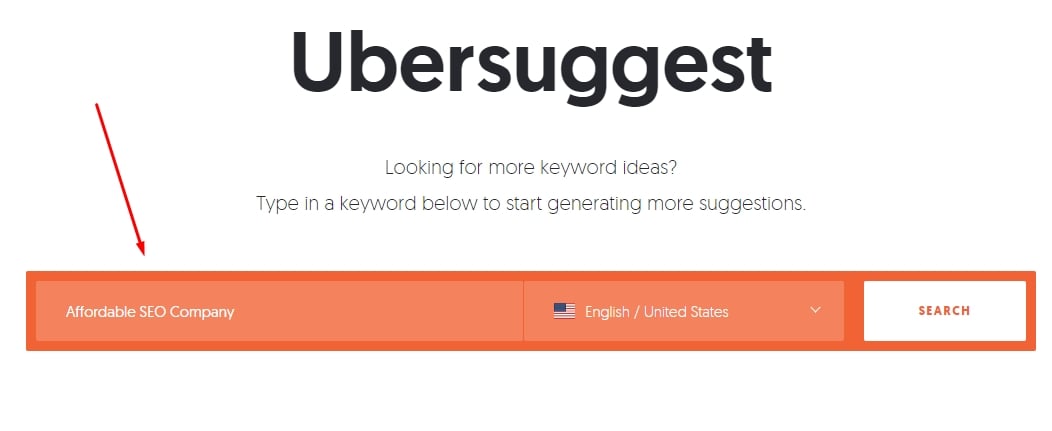
You can review the data that it returns to learn more about the keyword. Next, be sure to click “View All Keyword Ideas”.
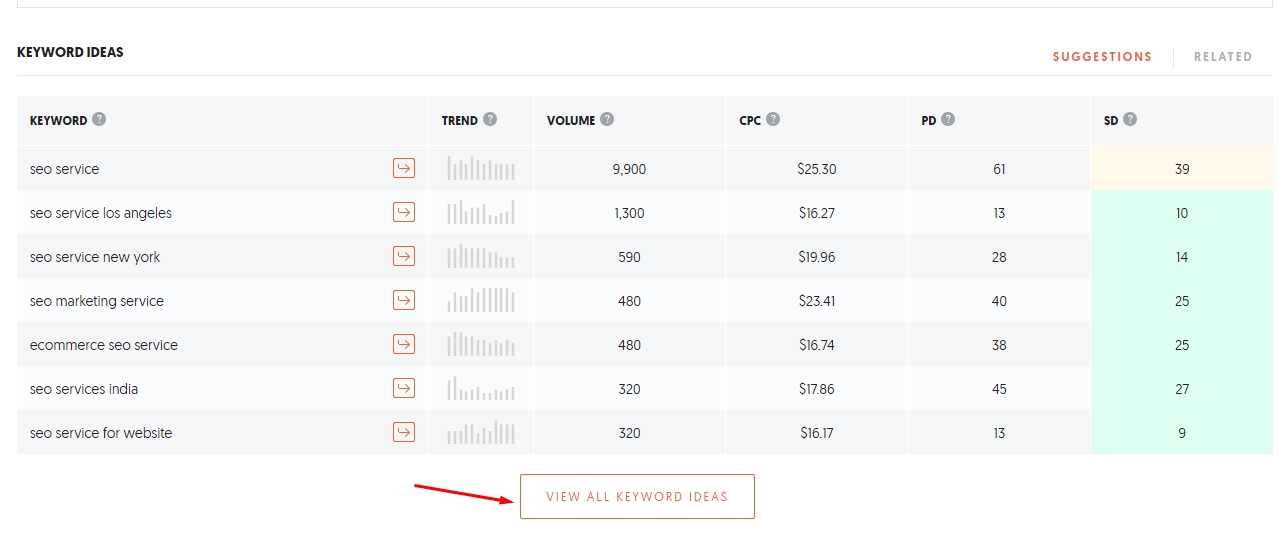
Lastly, export the data from each of your original keyword choices into your spreadsheet.
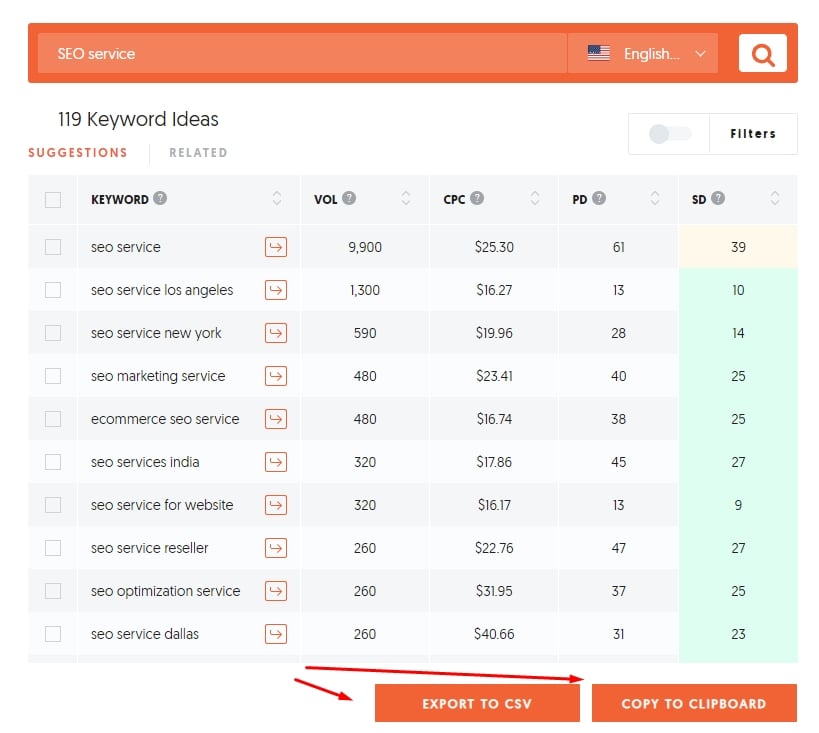
Now comes the fun part.
Make your way down this list and remove nonviable options. Some will be too competitive, and some will have too little volume.
The secret to success is finding the balance between competitiveness and demand.
Most of the time, high-demand keywords will be harder to rank for. So unless you’ve got a big appetite and even deeper pockets, avoid the most competitive phrases.
Don’t worry. Often, broad and/or vague keywords will get tons of monthly searches but poor-quality traffic.
Be on the lookout for medium-volume keywords that have a low, competitive index. These will have low “SD” scores and decent search volume (a few hundred is good in niche terms).
If you have trouble finding keywords that match these conditions, try modifying your target search terms as follows:
- Incite action – To target potential customers, add action-oriented phrases like “for sale” or “for rent”.
- Include your location – If appropriate, add in location modifiers to target local customers and leads.
- Be more specific – Add descriptors to long-tail SEO keywords that ensure more targeted traffic.
Speaking of inciting action, remember to consider searcher intent.
People type all kinds of things into Google. Sometimes, they’re looking to navigate to a site. Other times they may just be looking for images or a quick answer to a question.
In most cases, you’ll likely want to target keywords that indicate the searcher is looking to buy a product or service. Meaning, when someone searches for one of your target keywords, they should have “buyer intent”.
2. Follow Best Practices for On-Page SEO
So, you’ve done your keyword research and know what search terms you want to go after.
Great! The next SEO tip is another oldie-but-goodie.
Tried and true, on-page SEO is still a crucial step to earning higher rankings.
Cut corners on this one at your own peril. If you haven’t optimized your landing page content for specific search terms, you’ll find earning higher rankings exceptionally difficult.
For starters, we recommend that you mention a keyword 2-4 times on it’s assigned landing page.
Don’t get carried away, though. “Keyword stuffing” will not help you in 2019. A long, long time ago, this might have worked.
These days, Google is focused on ensuring that top-ranking content serves the user first. It shouldn’t come as a surprise that repeating a keyword over and over again doesn’t help users. It’s just annoying.
So just focus on a natural writing style that incorporates your targeted keywords where appropriate. If you have trouble with this, try reading your writing back to yourself out loud.
You might get some sideways glances if you’re at a coffee shop, but hey, no one said this was going to be easy.
Next, make sure that your keyword appears in a couple of critical places.
- Page title
- Page meta description
- URL slug
- H1 or H2
- Image alt-tags
A couple of these are accepted as ranking factors in Google’s algorithm, and a few of them are useful for improving CTR
If you use WordPress, the easiest way to modify meta descriptions and page titles is through Yoast SEO (they have a free version). It provides a visual editor for your page’s snippet.
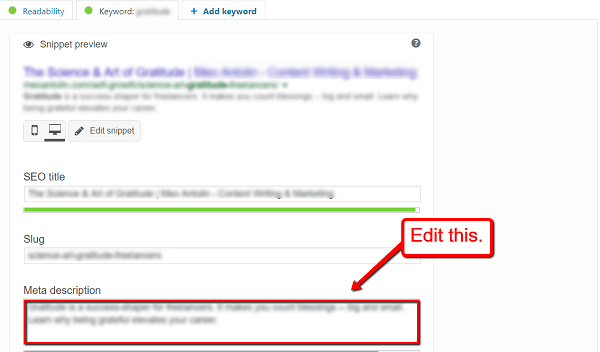 Believe it or not, that should do the trick!
Believe it or not, that should do the trick!
Of course, there’s plenty more you can do with on-page optimization to get the best results. If you want to go deeper, you can read our guide (that includes a free checklist to follow).
3. Improve Your Site Speed
Here’s one SEO trick that many know about, but haven’t dealt with.
Improving website load times can be a major hassle. But it’s worth the time and energy.
Not only can it improve your website’s search visibility, but it will improve your user-experience and reduce bounce-rates.
We’ll cover a few basics here, but if you really want to make headway, we recommend checking out our site speed optimization guide. You can also see a case-study we partnered with GTmetrix to publish last year.
Start by heading over to GTmetrix and running a report on your website, and bookmark the URL for the report it generates. You’ll use this as a benchmark for your improvements.
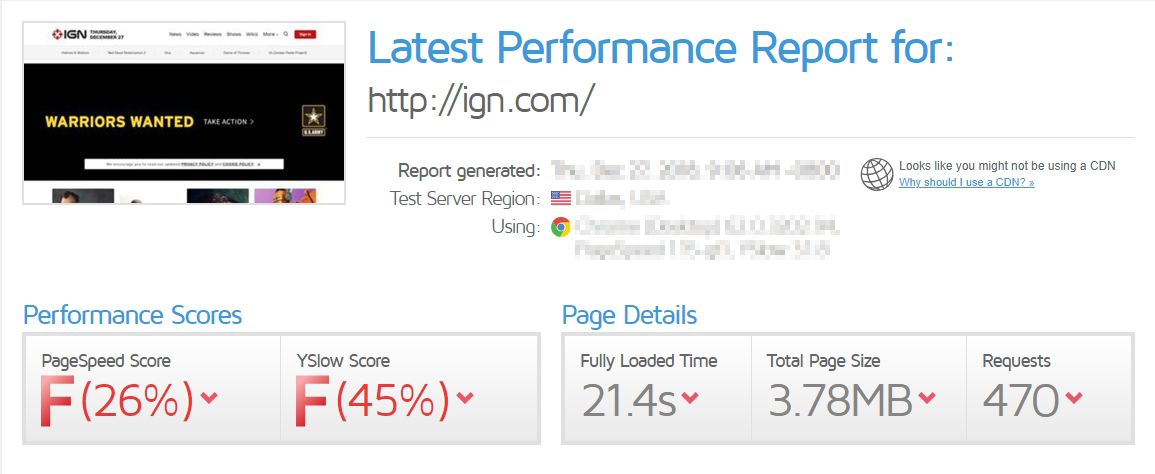
In this example, it’s pretty clear that this site is not well-optimized for speed. Of course, you may or may not be aware that IGN is a media website. So we’ll cut them a break.
Either way, you likely don’t want your report to look like this.
A good load of time to aim for is between 3-5 seconds. Under 3 seconds is excellent, but not all websites will be able to reach that level of optimization. It comes with trade-offs (fewer images, fewer marketing tools running javascript, etc.).
Scroll down for your report and look for recommendations rated “high” in terms of importance.
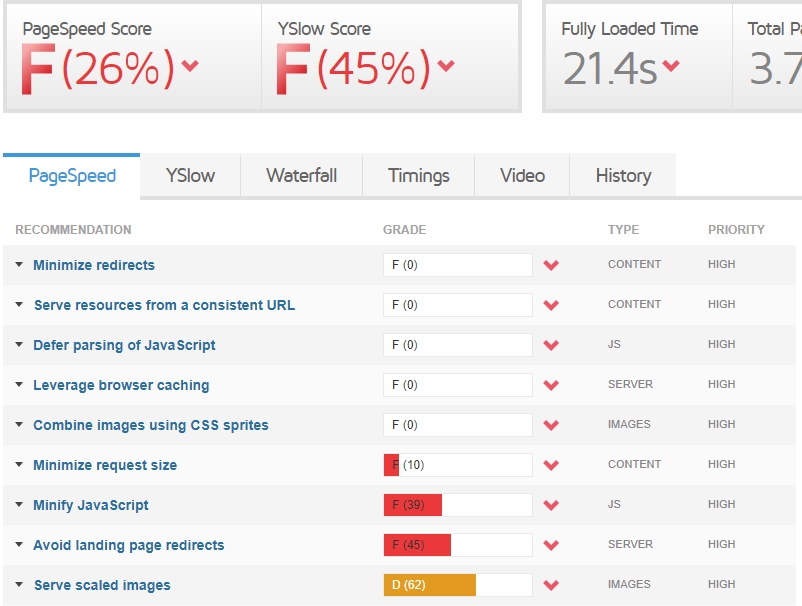
I know this will be a lot to take in. Fortunately, you can click on any of the items to learn more about what the issue is, and how you (or a developer) can go about making relevant improvements.
For SEO tips and tricks guides, look for the following:
- Optimize Images: This one is relatively easy to resolve. If you’re on WordPress, download an image optimization plugin like EWWW Image Optimizer, or WP Smush. Both have free options that can quickly optimize the file size of the images on your website.
- Minify JavaScript and/or CSS: This just means that you can make certain files smaller, saving on load times. Again, WordPress has a variety of free plugins that can do this for you, like Better WordPress Minify or Autoptimize.
- Leverage Browser Caching: By leveraging caching, you can drastically improve load times for repeat visitors. To solve this, try a WordPress plugin like W3 Total Cache or WP Rocket. Are you noticing a pattern here?
As I mentioned before, there is a lot more to do here. But this is a good starting point.
This SEO tip is honestly pretty important in the big scheme of things, so if you need help getting it done, we recommend hiring a specialist to help you. It’s worth it!
4. Mobile Optimization
If your site isn’t already mobile-responsive, it’s time to check the box on this increasingly important item.
Over the past few years, Google has made mobile a priority and a ranking factor. And for a good reason, I might add.
It’s “old news” that internet users are more likely to be on a mobile device than a desktop/laptop. But here’s some recent data to help visually prove the point.
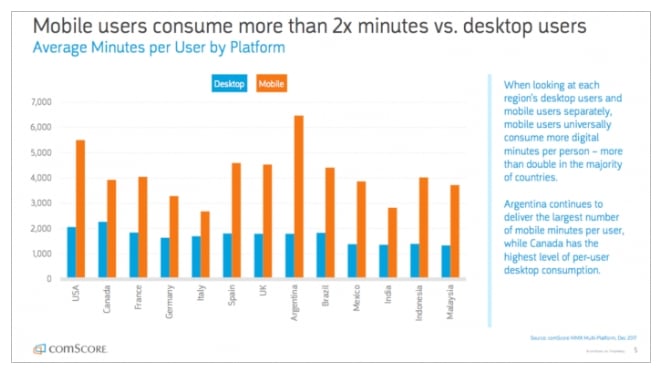
Given these trends, Google has already started moving to its mobile-first index.
Plenty of site-builders and themes (for WordPress, etc.) will come mobile-responsive “out of the box.” But it’s not a given. So the first step is to find out if your site is mobile responsive or not.
Google has a free tool for this. Just click here, enter your website, and read the report it generates.
Suppose you’re mobile-responsive, great. If not, let’s talk about what you can do next.
First, this is not something you’re going to be able to fix without a developer and webmaster. If you’re a typical small business owner, you will not possess the skills required to complete this project.
Fortunately, you’ll have lots of options.
A. If you already have an in-house team or developer, this should land squarely in their wheelhouse.
B. You could hire a web design and/or development agency to handle the task for you. Full disclosure, we do this at RankPay. Feel free to drop us a line if you’re interested in hiring us to help.
C. You can use a freelancer from Upwork (or a similar platform) to help you on a project basis. Just look for someone who has completed similar “go mobile responsive” projects in the past, and that fits within your price range.
Regardless of which path you decide to take, be sure to check the box on this one. Going forward, it’s only going to get harder and harder for websites that aren’t mobile-friendly to earn higher rankings.
5. Build Quality Links
Ok, so we covered a few quick SEO tips for on-page optimization, keyword selection, etc. But what about off-page SEO?
While there are many rankings factors in Google’s search algorithm, backlinks have consistently been among the most important.
In fact, you may remember a time long ago when backlinks were so singularly relevant, that spamming low-quality links actually helped improve rankings!
But those days are long gone. In 2019, your link-building efforts need to be focused on quality over quantity.
So stay away from Fiverr. Don’t buy links from cheap resellers. At best, they’ll have no impact. But often, they’ll hurt rankings, and can even earn you a slap on the wrist from Google in the form of a manual penalty.
Not good.
So for 2019 and likely beyond, let’s talk about how you can earn quality links.
Reclaim Lost Links
If you updated a page’s URL or removed it altogether, then you could have a few broken or lost links. Tools like Monitor Backlinks and Ahrefs can help you detect and recover them by contacting the link’s source.
Contribute content to relevant outlets
You may have noticed that guest posting has turned into a bit of a negative word lately mostly because many writers took up “spinning content” and recycling tired topics just to land a mention on a variety of low-quality outlets.
Don’t look at it that way.
Instead, think of these as opportunities to build brand awareness, hone your ability to communicate with an audience, and hopefully earn a relevant link.
Build a list of relevant publications and reach out to partner with editors. Just focus on providing value to readers, and you’ll do fine!
Partner with other businesses
Find other businesses that help your target audience, and try to establish a relationship.
You can do so by contributing content to one another’s blog or newsletter. You can also extend special offers to one another’s clients.
Either is a great way to expand your brand’s reach, form a lasting and beneficial partnership, and earn a link or two.
Invest in quality content marketing
To earn links naturally, you’ll likely want to invest in content for your website.
The more useful content you have, and the more you work to earn it relevant exposure, the more likely it will be linked to by other sites.
It’s a simple formula and one that really works.
But given the sheer volume of content being published every day, it can be tricky to stand out. You will want to get creative, put in the work, and be consistent.
If you don’t have someone in-house to do this, consider hiring outside help. Again, full disclosure: we’ve built our team of US-based professional writers over the past few years, and we do this for clients every day.
Conclusion
SEO tips and tricks are a dime a dozen. You’ve probably seen (and turned away from) articles that include 100+ tips for higher ranking.
Most of these guides are useful if you have the time and energy required to devote weeks or months to SEO.
Our goal with this guide, however, was to help you focus your efforts where they’re needed most. Of course, that’s not to say that the above tips are easy to employ. They’ll still take time.
But we believe these are SEO tactics that are here to stay. So the time invested will continue to pay dividends for you, for years to come.
Just remember, search engine optimization and user experience have a lot in common these days. Be contextually relevant, stay focused on quality, and don’t rush things.
As we always tell clients, SEO is a marathon, not a sprint.
Good luck in 2019!








